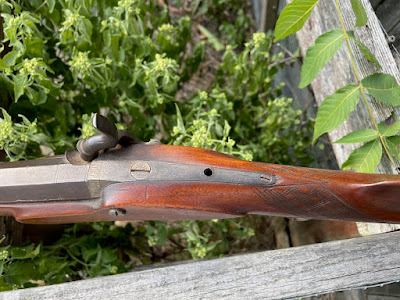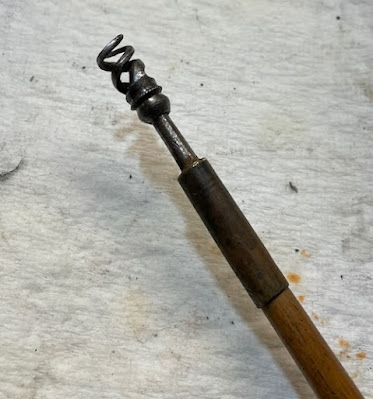Last week I started reading up on the Cattaruagus 225Q "Quartermaster" knives that were produced for the US military during World War 2. My interest was piqued so I went online looking for one as a user.
Up until fairly recently they were available for $50 or less but as with everything else, prices have gone up. I found this one on eBay and was able to get it for $90 + tax and shipping. It arrived today.
For a knife made about 80 years ago it's in extremely nice shape. The carbon blade is free from serious corrosion or pitting and shows signs of only light use. It came with a nice, sharp edge, too.
The stacked leather washer handle is also in very nice condition. It bears the typical random grooves found on my 225Qs, intended to enhance one's grip. The pommel is tight and doesn't show any signs of being used as a hammer. Overall the hilt is tight. I've applied a few light coats of Fiebing's 100% neatsfoot oil and the washers have soaked it up. I'll add some more and then give it a coat of Sno-Seal, which is mostly beeswax.
On the other hand, the sheath is showing its age and for that reason I have a replica on the way for actual use. I've given it a couple light coats of neatsfoot oil and like the knife's handle, it's drinking up the oil.
The 225Q has a 6" blade with a swedge on the back of the tip, but it's not sharpened. The blade is 3/16" thick at the spine and a hair under 1.3" wide. The small guard shouldn't get in the way of use in woodcraft or dressing game.
The blade shape is very similar to my Varusteleka Terävä Jääkäripuukko 140, which I've used to process a few deer. I'd expect the Cattaruagus to perform similarly to the Finnish knife.
For size references, here's the Cattaraugus flanked by a Mora Kansbol and a Case Stockman.
As a contemporary of the USN Mk.2 fighting knife, AKA the "Kabar," it invites a comparison. The 225Q's blade is an inch shorter but a little thicker. I like the feel much better than the more famous Kabar. Likewise, the blade geometry on the 225Q makes it a better field knife than the later USAF Aircrew Survival Knife, AKA the "bolt knife". (Having used a USAF knife in the field, I am not a fan of it.)
I'm looking forward to taking this knife into the woods and using as it was intended to be.























